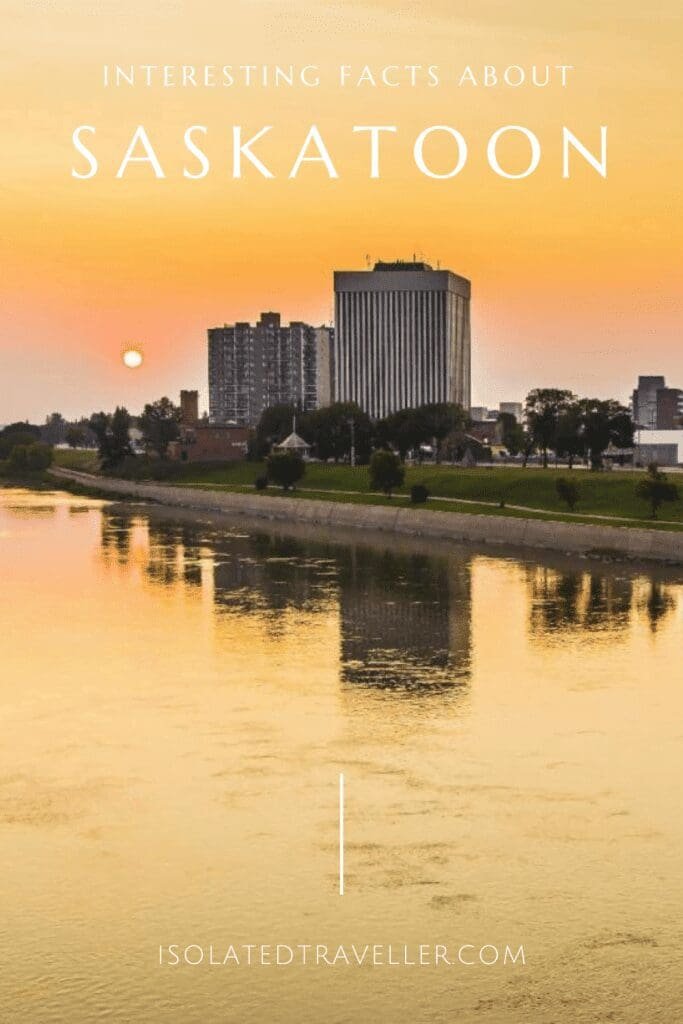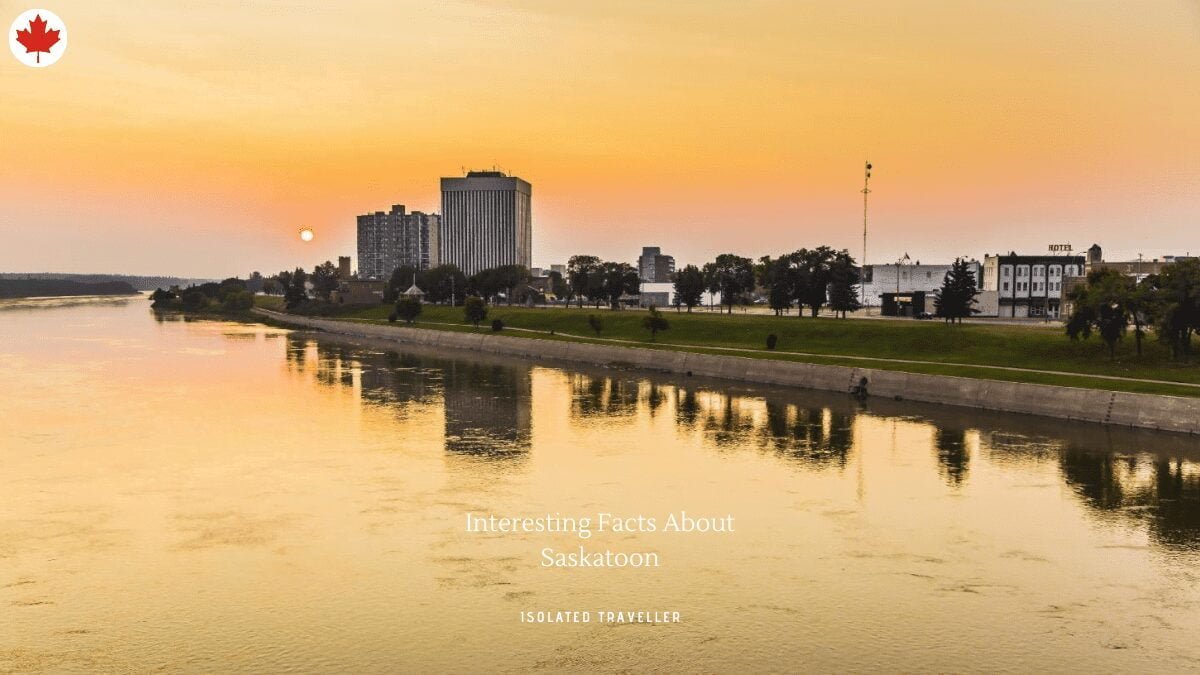Facts About Saskatoon
- Saskatoon is the largest city in the Canadian province of Saskatchewan.
- The name Saskatoon comes from the Cree inanimate noun misâskwatômina “saskatoon berries”, which refers to the sweet, violet-coloured berry that grows in the area.
- Saskatoon is known as the ‘Paris of the Prairies’ and “Bridge City” because of its seven bridges.
- Saskatoon was established in 1883.
- Saskatoon is divided into east and west sides by the South Saskatchewan River.
- Saskatoon was incorporated as a city in 1906.
- In 2016, the largest snowball fight ever took place in Diefenbaker Park in Saskatoon with 7,681 people, making it the world’s largest snowball fight.
- Saskatoon’s first and only recorded earthquake occurred, at 9:15 am on May 15, 1909.
- Saskatoon has Canada’s only perogy drive-thru.
- The highest temperature ever recorded was 40.6°C on June 5, 1988. The lowest temperature ever recorded was −50.0 °C on 1 February 1893.
- Saskatoon has three main school boards, the Saskatoon Public School Division, the Saskatoon Catholic School Division and the Conseil des Ecoles Fransaskoises.
- The Canadian rock band The Sheepdogs are from Saskatoon.
- Saskatoon Coordinates: 52.06980 -106.82497 52.23114 -106.50370.
- Saskatoon hosts many festivals and events in the summer, including the Shakespeare on the Saskatchewan Festival, The Great Plains Comedy Festival, the Jazz Festival and the Canada Remembers Airshow, among others.
- The world’s largest potash producer, PotashCorp, has corporate headquarters in Saskatoon.
- Saskatoon has welcomed members of the Royal Family since 1919.
- Saskatoon has a significant Indigenous population and several urban Reserves.
- Saskatchewan has experienced steady GDP growth over the past decade. The province posted a GDP of $81.5 billion in 2019.
- Saskatoon’s Elevation is 454 m above sea level.
- Saskatoon is one of the sunniest cities in Canada, averaging 2,380.8 hours of sunshine per year.
- The Estimated Population of Saskatoon is 273,010.
- Wanuskewin Heritage Park, a National Historic Site of Canada representing 6,000 years of First Nations history.
- There are more Tim Horton’s per capita than in any other city in Canada.
- Saskatoon is home to the University of Saskatchewan.
- Saskatoon lies on a long belt of rich, potassic chernozem in middle-southern Saskatchewan and is found in the aspen parkland biome.
- Saskatoon has been inhabited for at least 6,000 years.
- Saskatoon is twinned with Umeå, Sweden; Shijiazhuang, China; Cologne Germany & Tampere, Finland.
- Saskatchewan grows half of the entire quantity of Canada’s major export crops: wheat, oats, barley, rye, flaxseed and canola. Saskatoon is at the heart of this market, providing a variety of services and products to the farm sector.
- The highest elevations in Saskatchewan are found in the Cypress Hills, peaking at 4,567 feet above sea level.
- Saskatoon’s other nickname, the “Hub City,” refers to its ideal central location for distribution and logistics.


